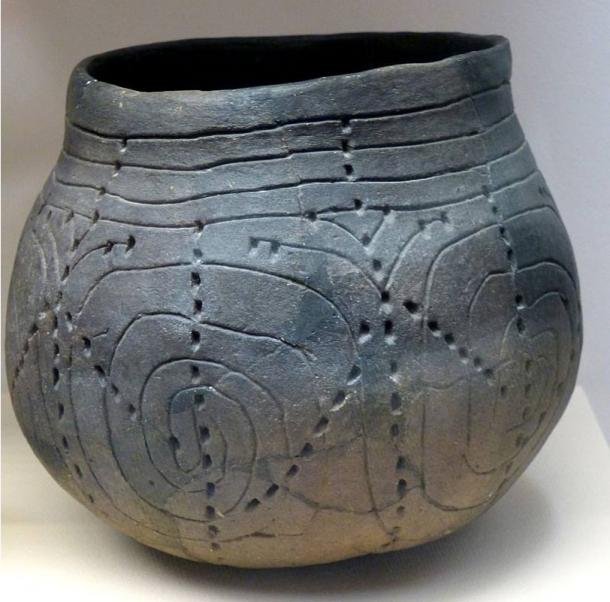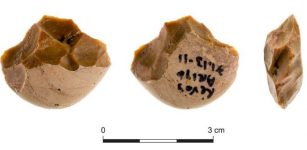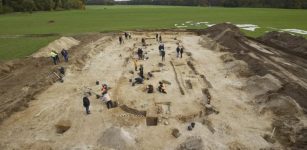Oldest case of leukemia found on 7,000-Year-old skeleton
German researchers have discovered signs of what may be the earliest known case of leukemia on a 7,000 year old skeleton.
The victim of the disease was a female individual who appears to have been in her 30’s when she died. Her skeleton was initially excavated in 1982 at a site near Stuttgart-Mühlhausen in south western Germany, dating from the early Neolithic period. Another 71 burials were uncovered near her at the same location.
The skeleton was laid next to a round-bottomed jar linked to the Linear Pottery culture of western and central Europe, 5500–4800 BC. This was an early farming culture that produced pottery decorated with linear markings.
The scientists announced the discovery at the first European conference on evolutionary medicine held just recently at the University of Zurich in Switzerland.
“So far only a severe case of dental caries with alveolar inflammation was reported for this individual” said Heike Scherf from the Senckenberg Center for Human Evolution and Paleoenvironment at the University of Tübingen in Germany, speaking to Discovery News. “
A virus associated with a special type of leukemia (T-cell leukemia) was previously found in Andean mummies. But this case is probably the earliest known appearance of leukemia in an archeological case.”
The research team discovered a deep loss of spongy bone in the bone tissue of the humerus and the sternum (breastbone). It affects the hematopoietic stem cells in bone marrow and is strongly suggestive of leukemia in its initial stages, ruling out other conditions such as osteoporosis, hyperparathyroidism and bone tumor.
The researchers are unable to draw any further conclusions about the discovery at this stage, but Frank Rühli, director of the Institute of Evolutionary Medicine at the University of Zurich, where the conference took place, said that to have an indication for the oldest paleopathological record of a modern, frequent disease with a major impact such as leukemia is very important from the perspective of the evolution of the disease.

7,000-year-old skeleton of woman may have been a victim of leukemia, making it the oldest case found. Credit: University of Tübingen
The discovery ranks among other similar research such as the discovery of the earliest known case of breast cancer, found in an Ancient Egyptian skeleton in March this year. In December 2014, researchers found the earliest known case of lung or prostate cancer in a 4,500 year old Siberian skeleton, dating to the early Bronze Age.
The Ancient Greeks were the first to positively identify cancer in the fourth to sixth centuries BC. In 1932, Louis Leakey discovered a mandible belonging to a specimen of early humanoid, Homo erectus, which was later discovered to be showing indications of Burkitt’s lymphoma, a cancer of the jaw common in East Africa.
Another ancient indication of cancer was found on the skeleton of a dinosaur dating to around 150 million years ago. However, the specific form of cancer we call leukemia was not officially diagnosed until 1845, when John Hughes Bennett identified it in Edinburgh. In 1913, the condition was classified according to four specific types: chronic lymphocytic leukemia, chronic myelogenous leukemia, acute lymphocytic leukemia, and erythroleukemia.
Some researchers now believe that cancer was almost non-existent in the ancient world when compared to modern rates of the disease, thereby suggesting that modern cancers are primarily caused by modern environmental and social conditions.
AncientPages.com






















